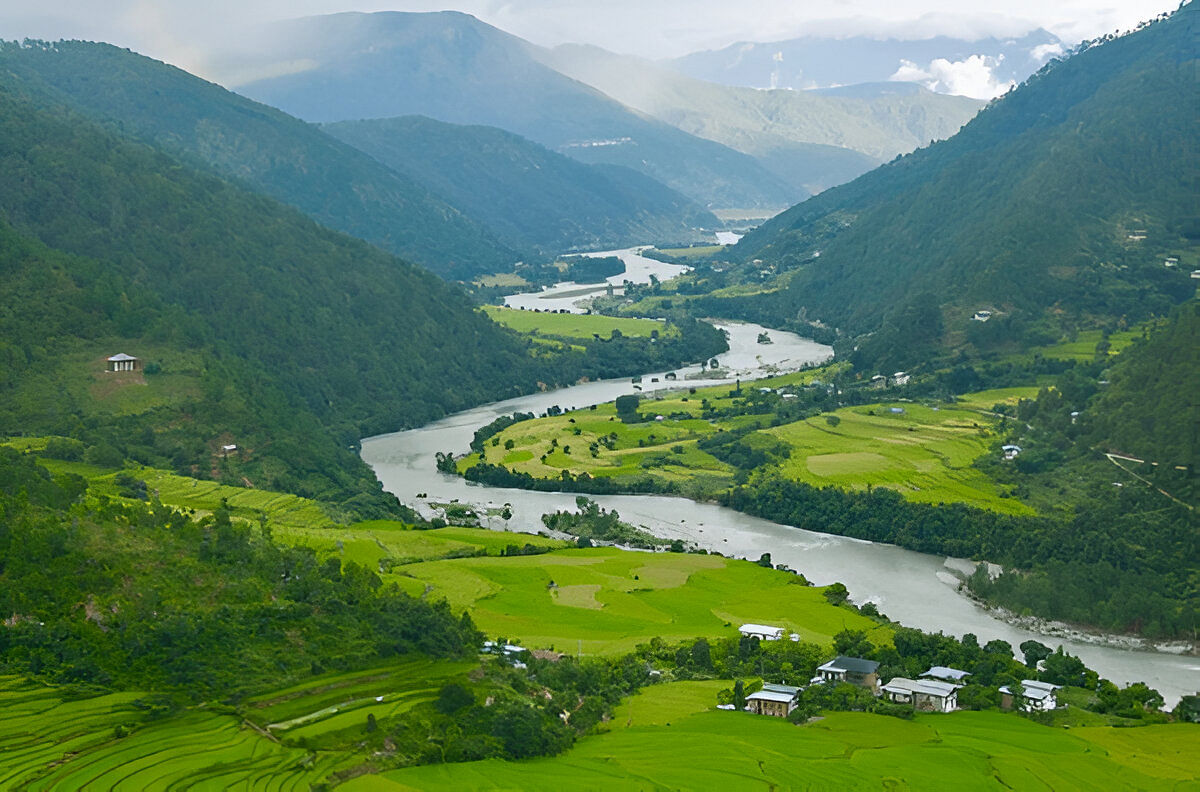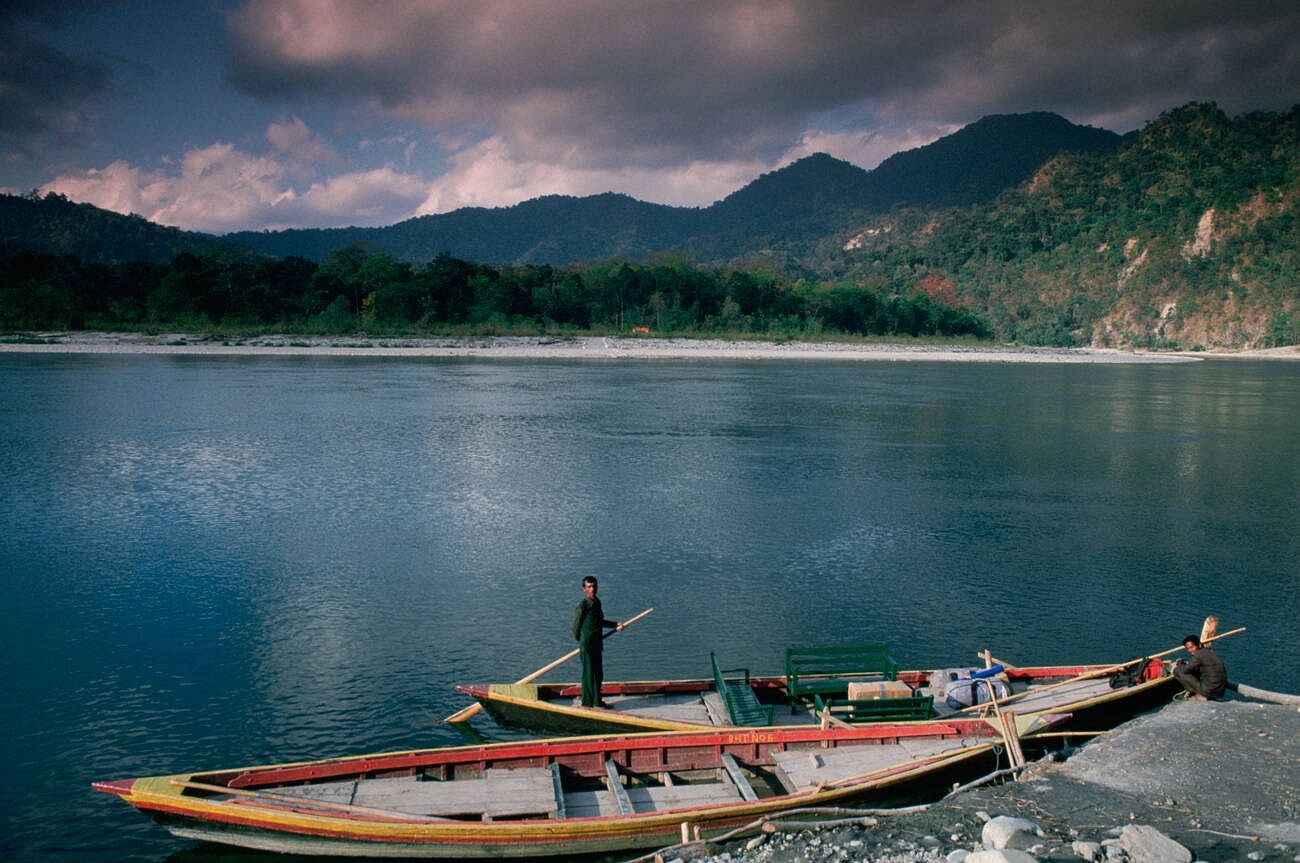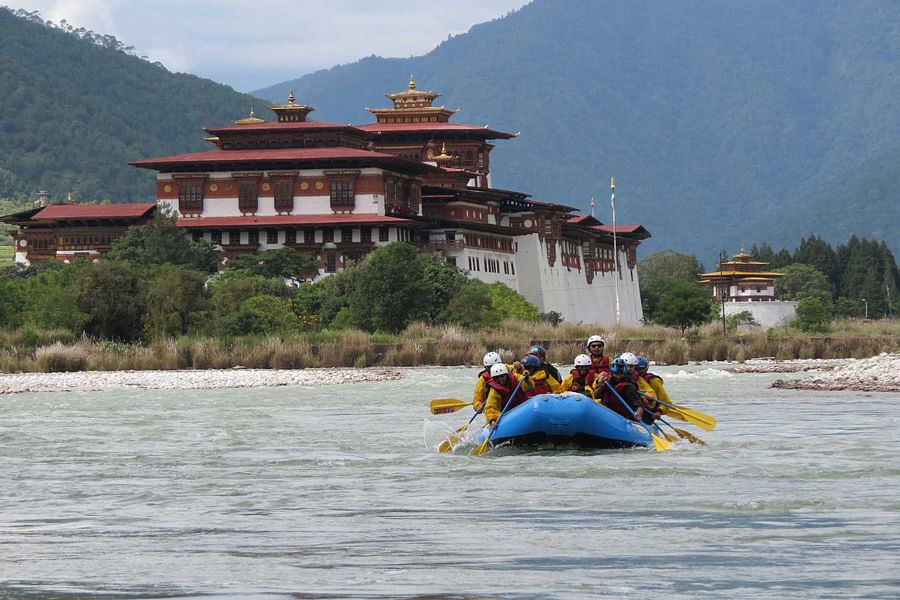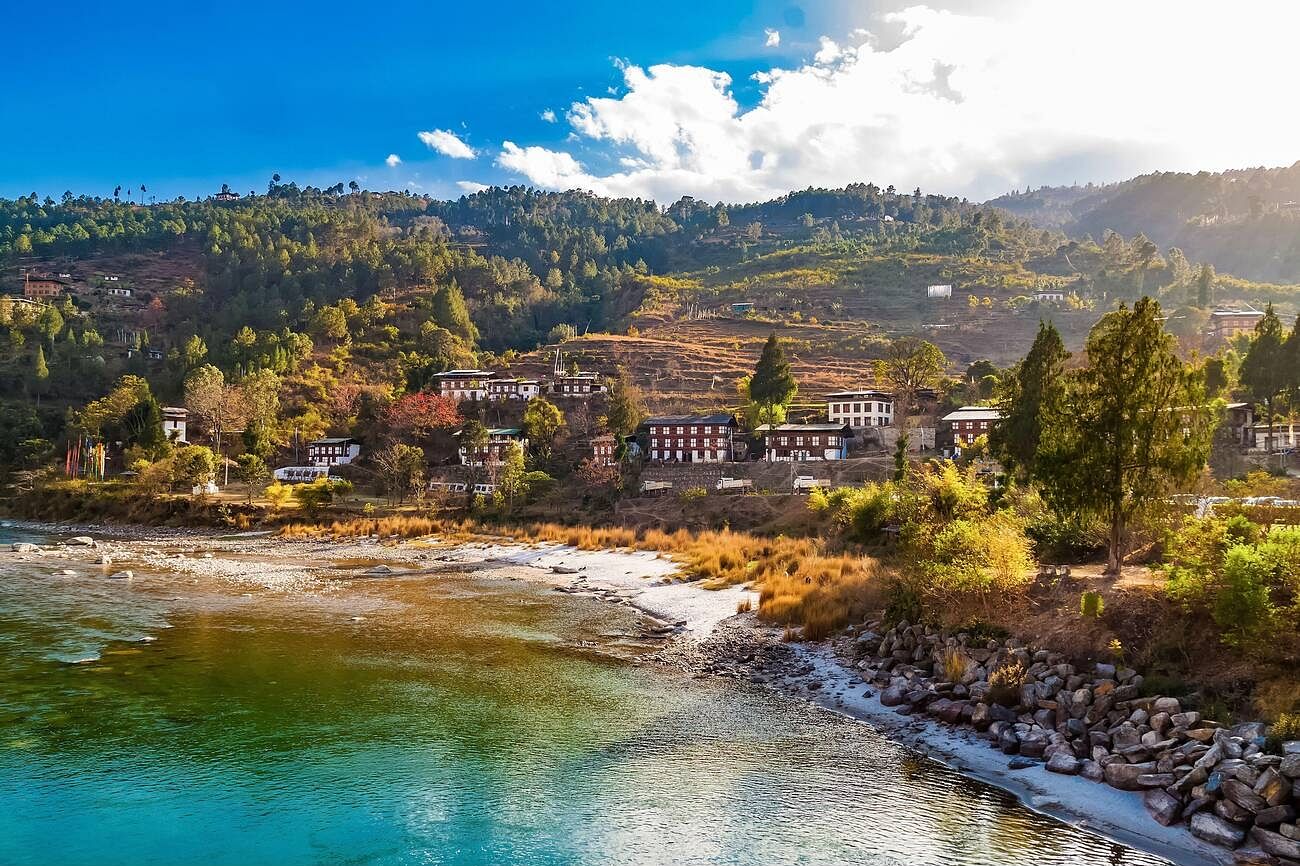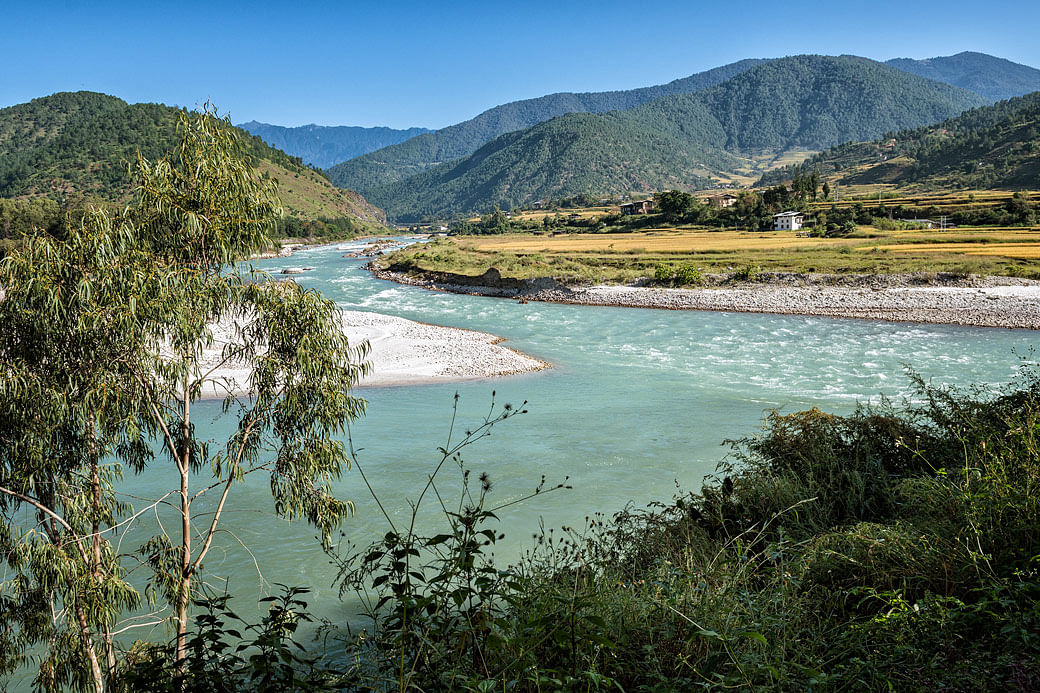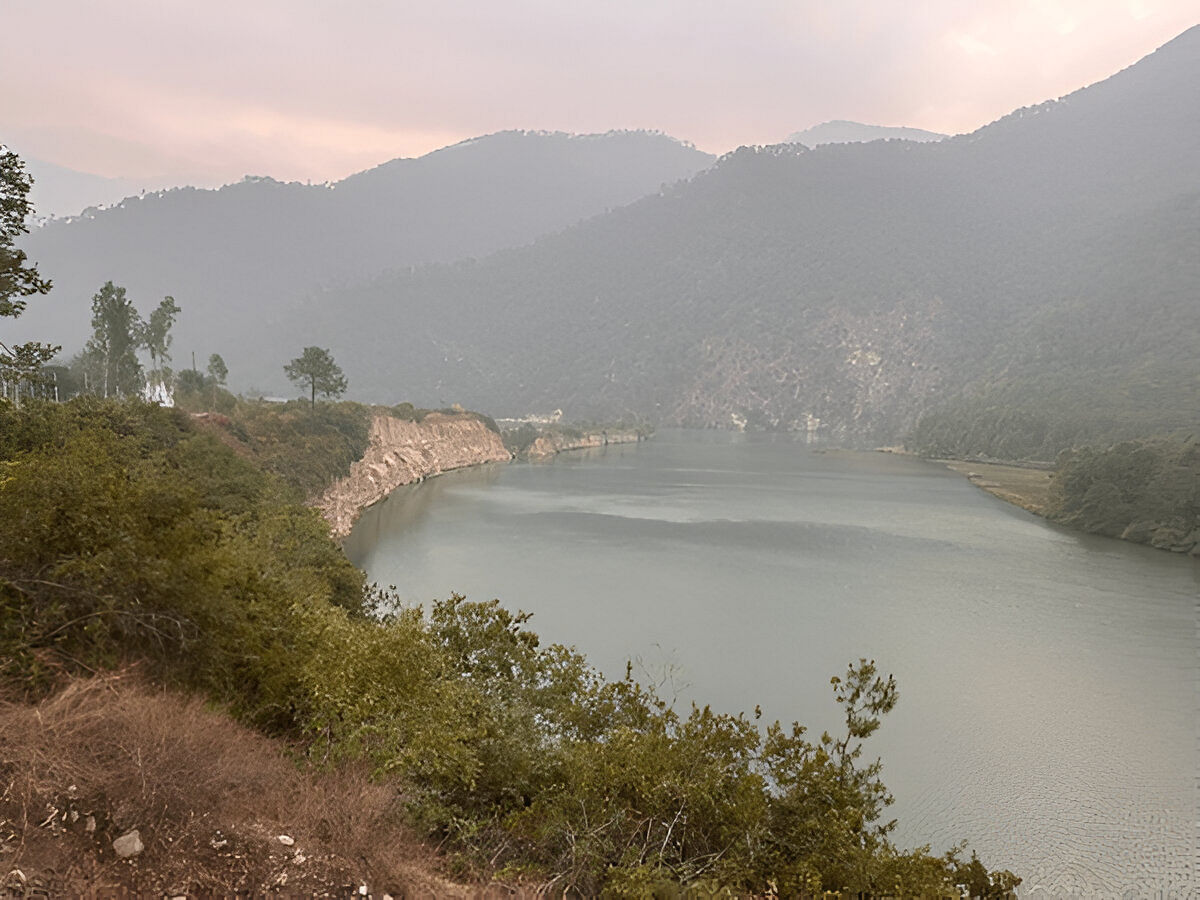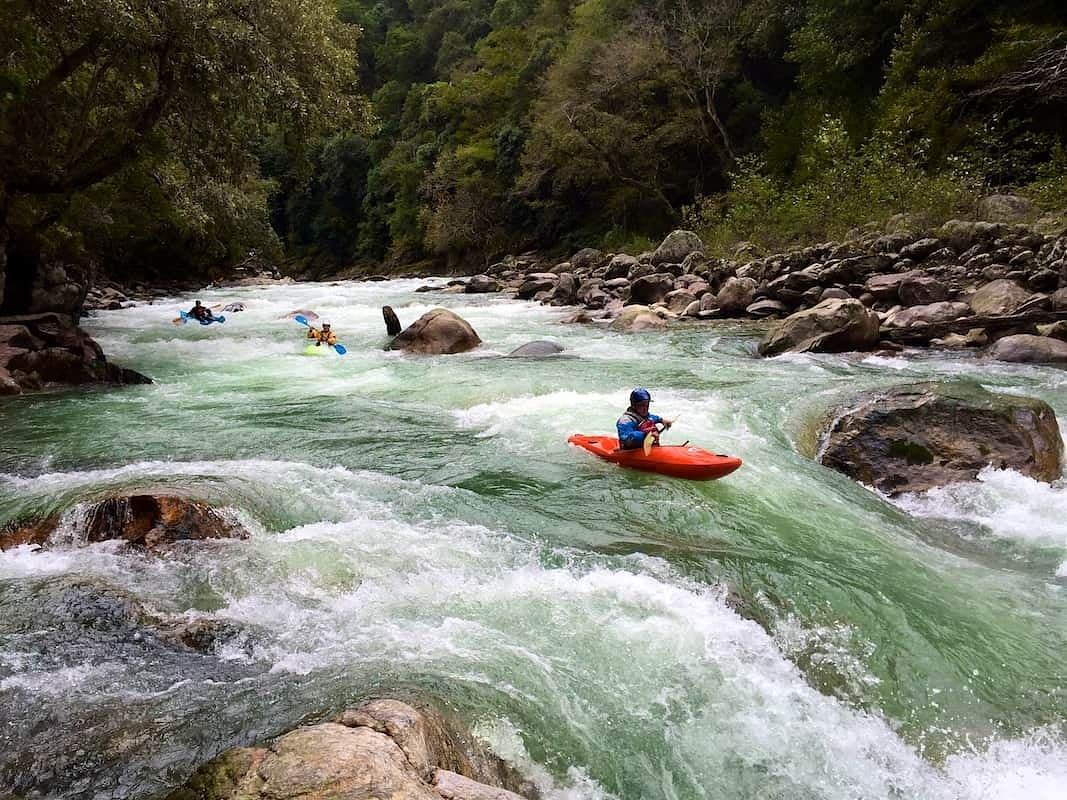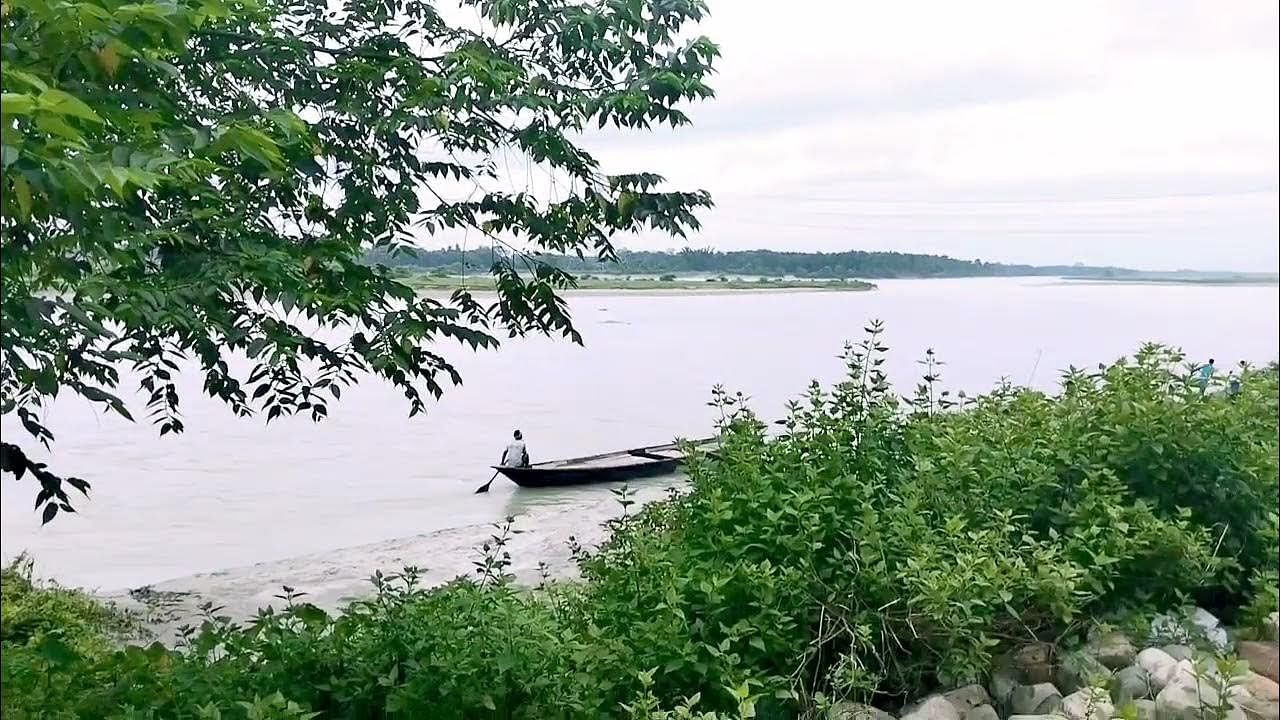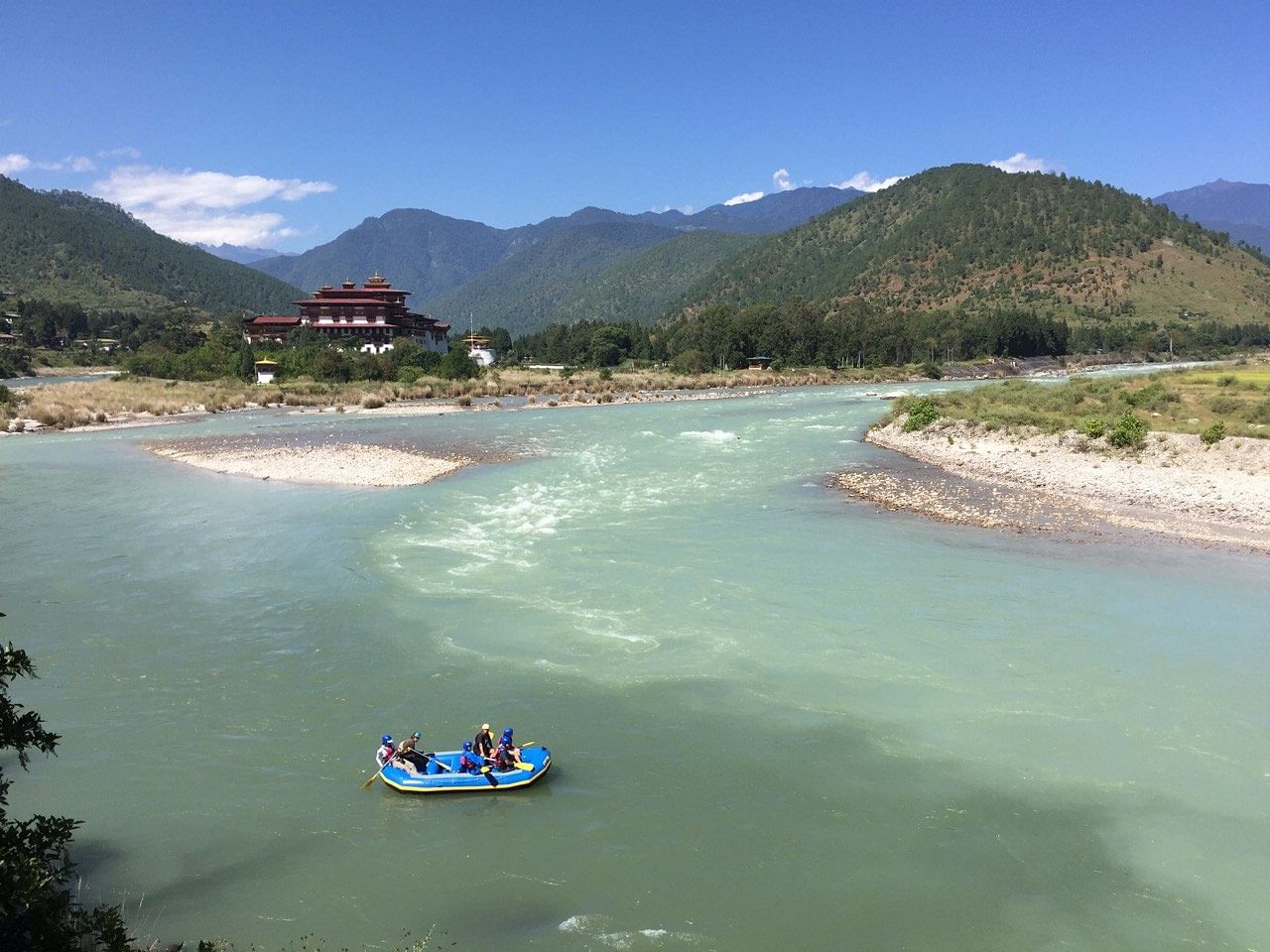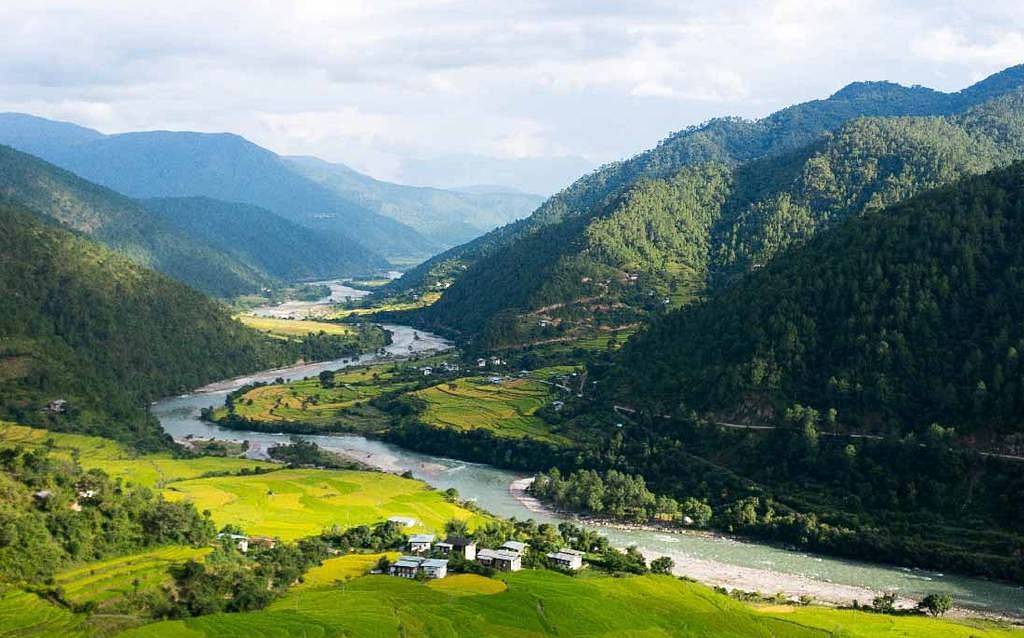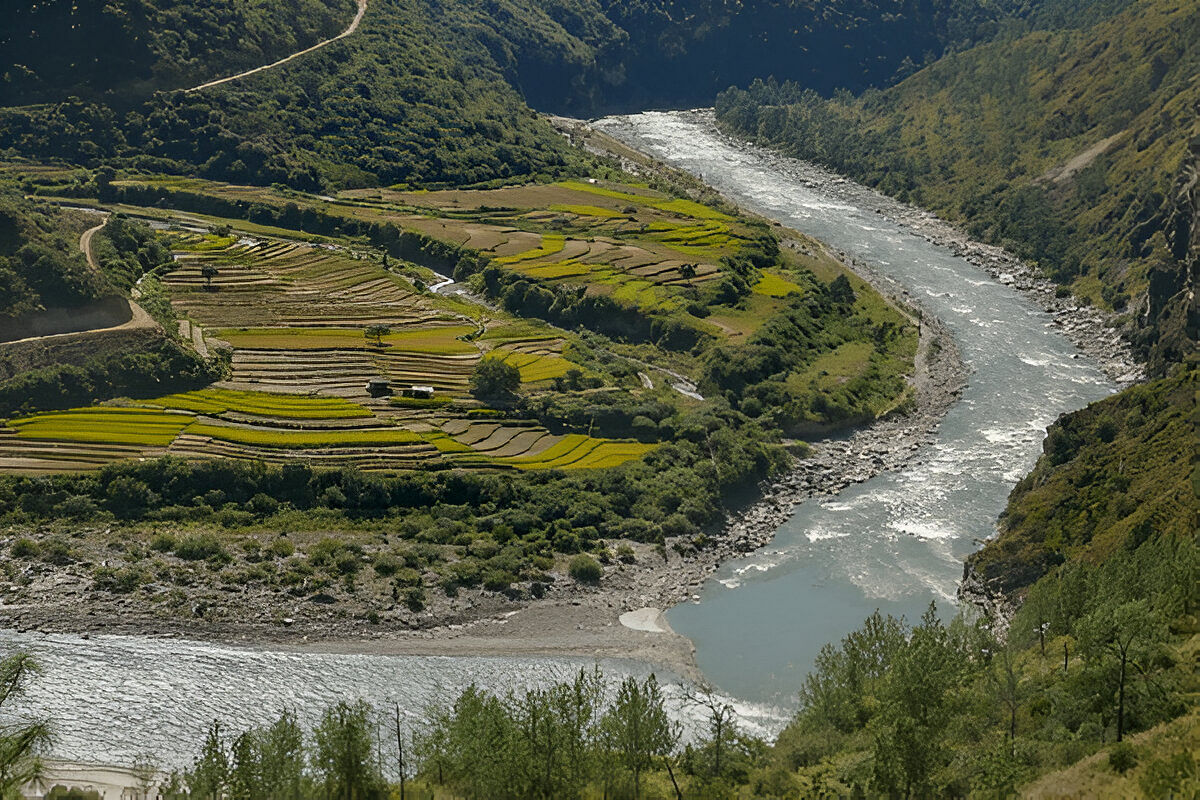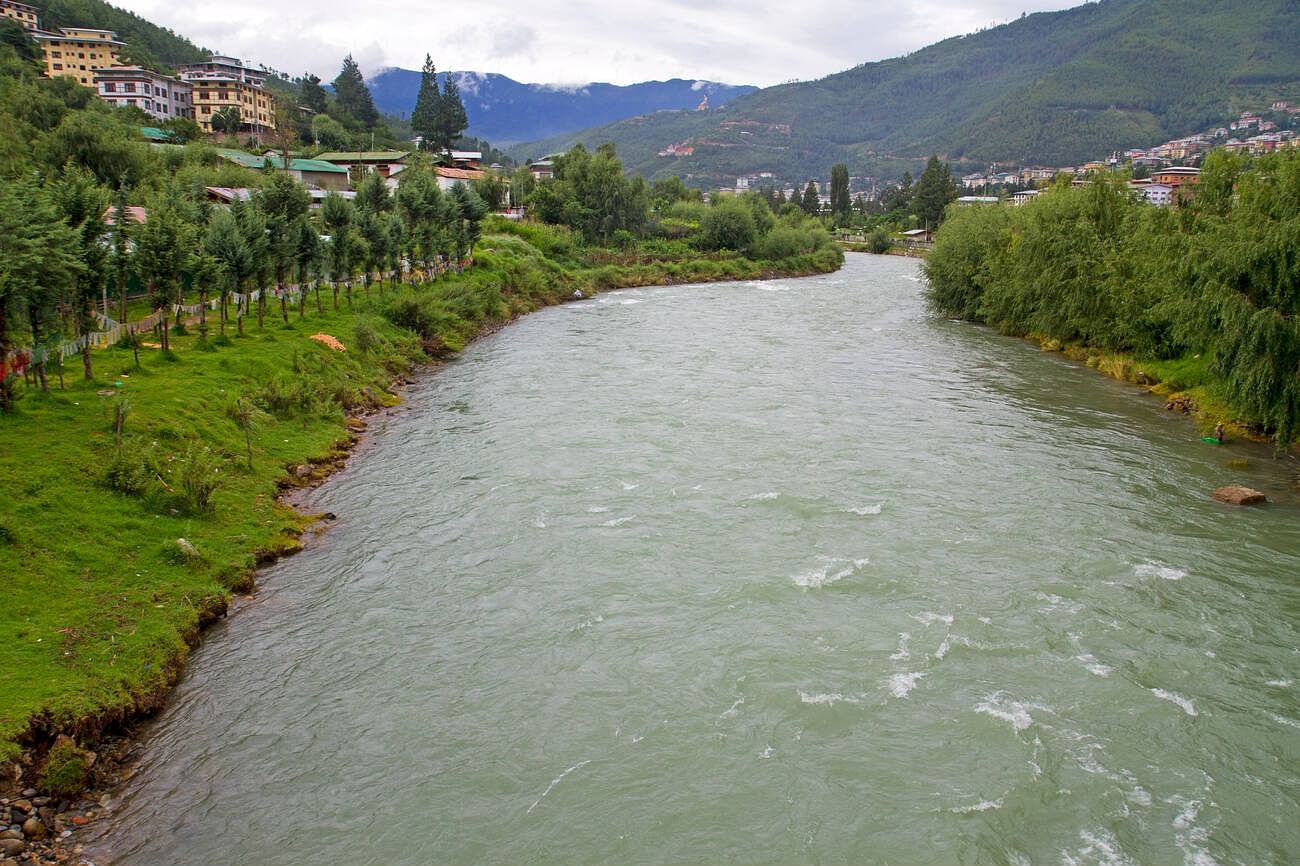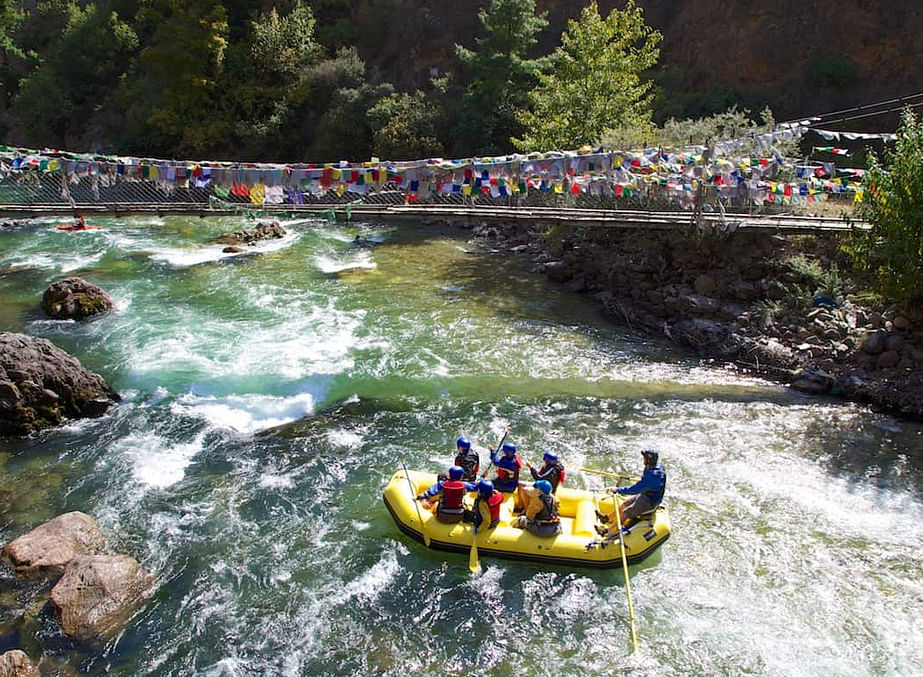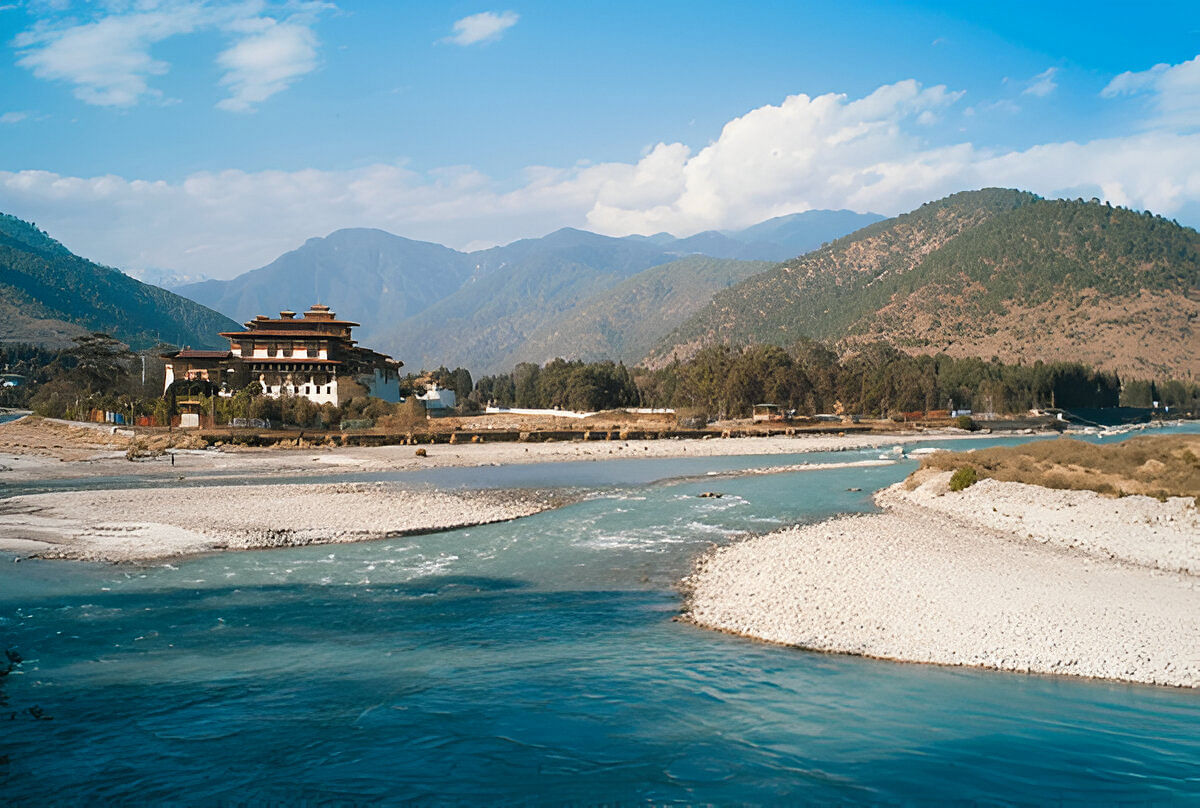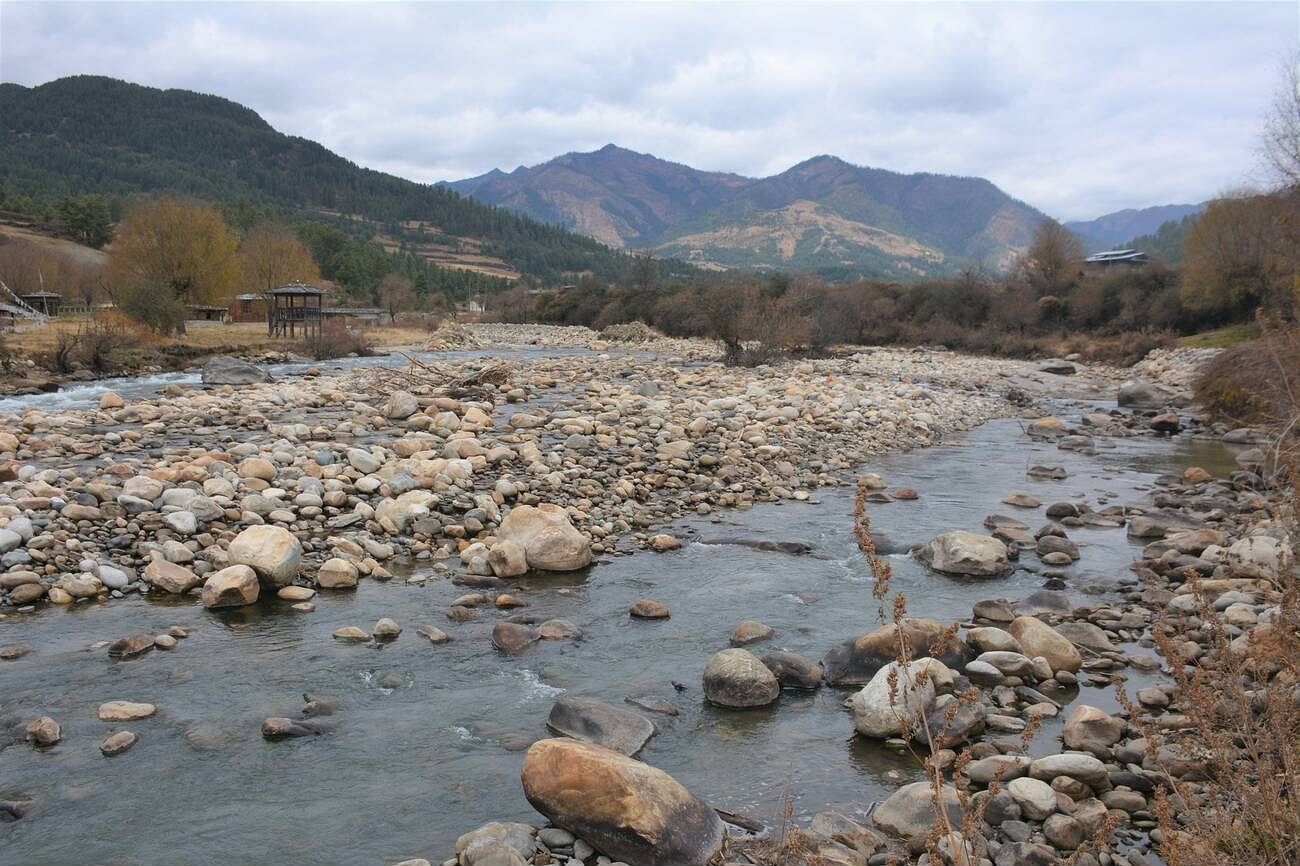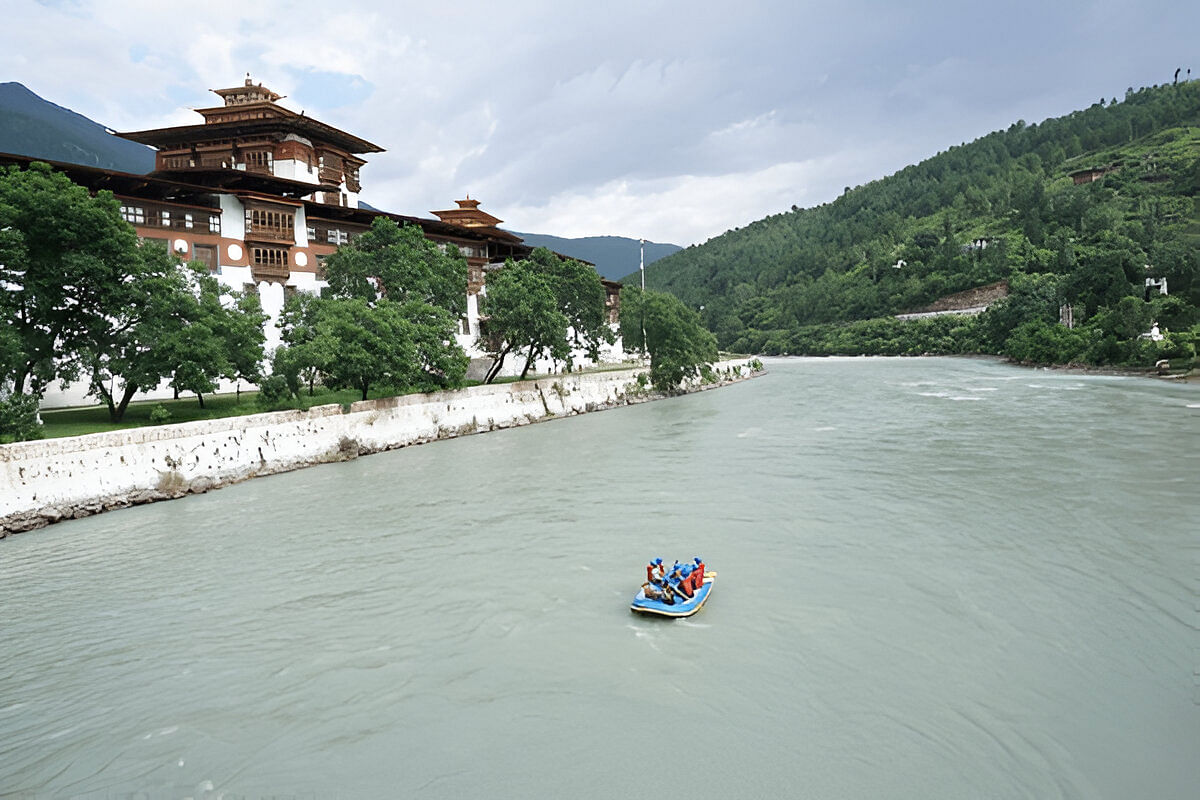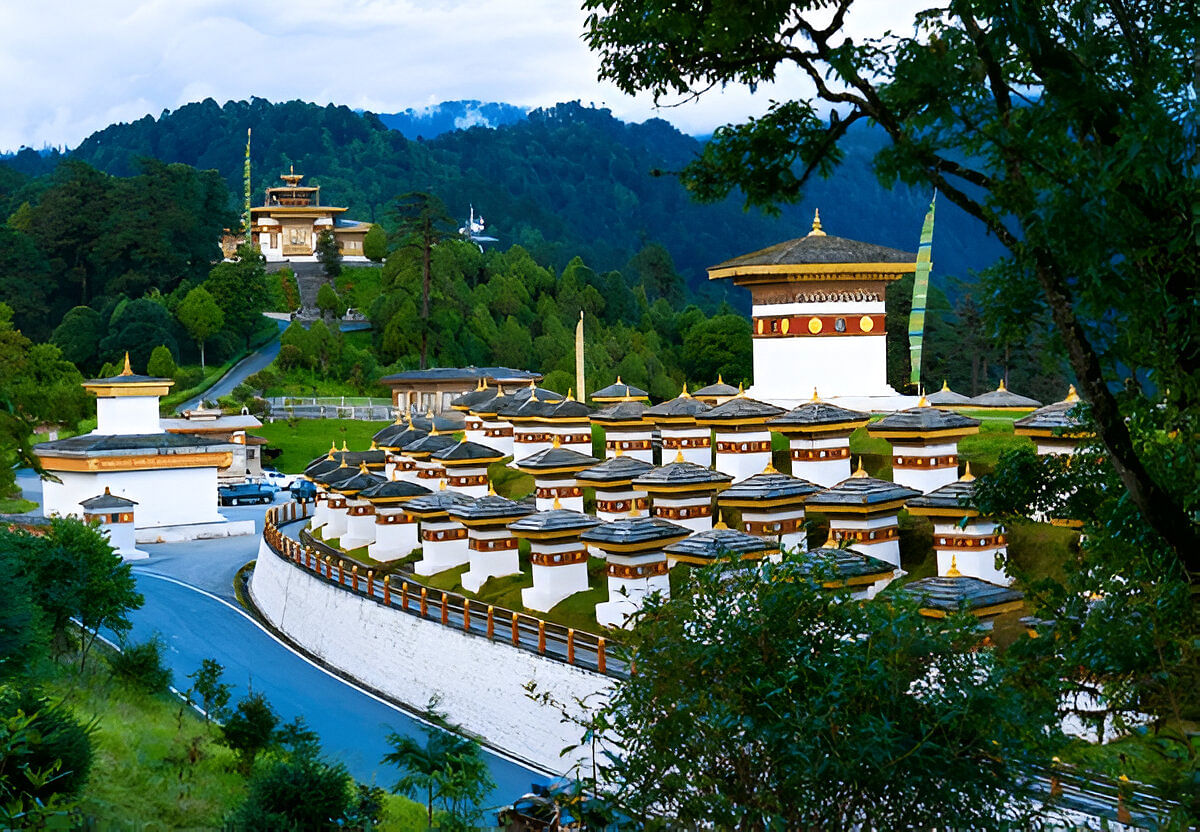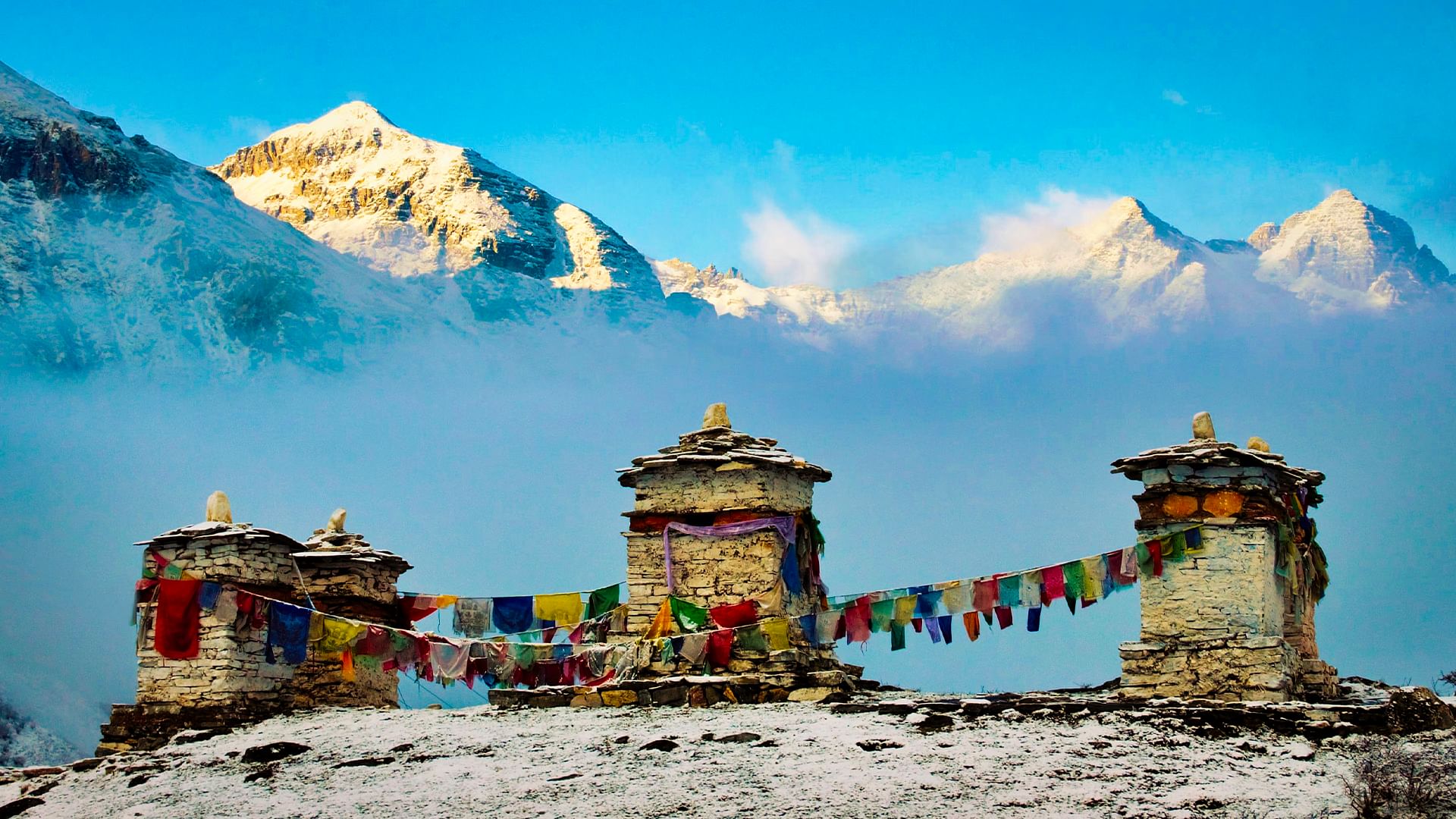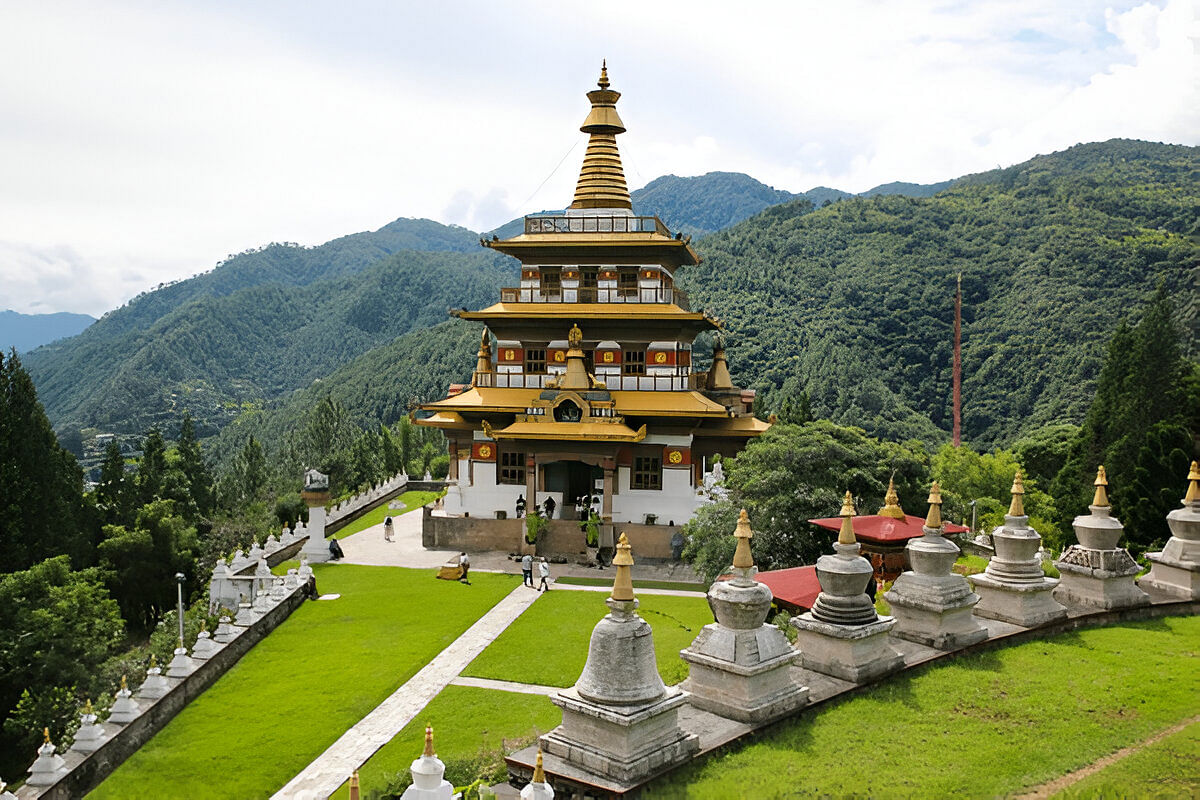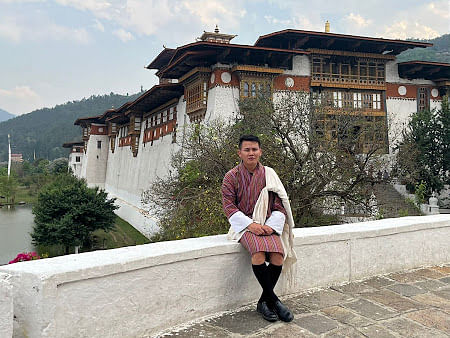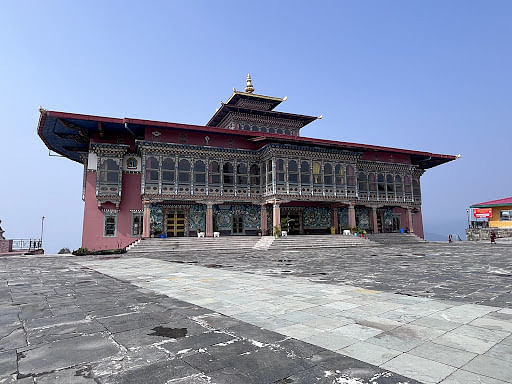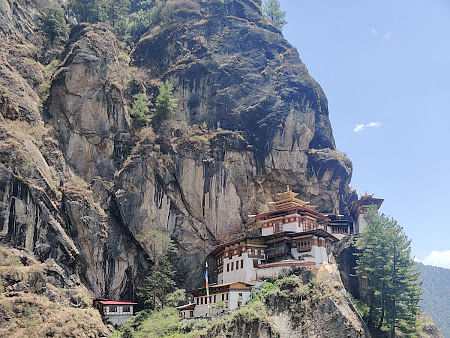Think Bhutan is all about mountains and dzongs? Wait till you see the rivers! Bhutan rivers are absolutely everywhere, cutting through valleys, crashing over rocks, and basically running the show here. These aren't your calm, lazy rivers either. Most of them come straight down from glaciers with a serious attitude.
The Drangme Chhu is Bhutan longest river, stretching over 370 kilometres across the east. Then there's the Pho Chhu, Mo Chhu, Wang Chhu and several others that'll make your jaw drop. Some are crystal clear and calm, others? Total chaos is squeezing through narrow gorges.
Here's what's cool, though. Locals don't just use these rivers for water or electricity. There are ancient monasteries built right on the edges, prayer flags tied across them, whole ceremonies around them. The rivers are sacred, loud, beautiful, and kind of intimidating all at once. When you go with our Bhutan Tour Packages, you'll cross these rivers on bridges and realise pretty fast why Bhutanese people respect the water so much!
Complete Guide to Bhutan Rivers for Travellers
The major rivers in Bhutan are not just veins of water—they’re carriers of stories, adventure routes for thrill-seekers, powerhouses of energy, and lifelines of tradition. Fed by Himalayan glaciers and monsoon rains, these rivers carve valleys, create habitats, and give Bhutan its iconic geographical drama. Here's a deeper look at each of them:
1. Drangme Chhu (Manas River)
You know what's super cool? The famous rivers of Bhutan have personalities! Let’s start with the big daddy—the Drangme Chhu, aka the Manas River, once it flows into India. It's Bhutan's longest river, originating from the high glacial peaks of eastern Bhutan. It's a tributary of the mighty Brahmaputra and stretches over 400 Kilometers, carving through the dzongkhags (districts) of Trashigang, Mongar, and Pemagatshel before crossing into Assam.
It took us three bone-jarring days on mountain roads to reach the Drangme Chhu in eastern Bhutan, but wow, was it worth it! This is definitely one of the famous rivers of Bhutan that most tourists miss out on.
The villagers in the tiny settlement of Khoma seemed genuinely surprised to see us. They invited us to join their evening gathering, where an elder told stories about river spirits while children played nearby. The massive Drangme Chhu roared in the background - nature's perfect soundtrack!
Highlights:
- The largest river basin in Bhutan
- Feeds several sub-rivers like Kuri Chhu and Dangme Chhu
- Drains nearly half of eastern Bhutan
- Excellent for multi-day rafting expeditions with Class III–IV rapids
The Drangme Chhu is not just known for its length—it’s revered for its biodiversity. The Manas National Park, where it eventually flows, is a UNESCO World Heritage Site. Expect sightings of golden langurs, river otters, and countless bird species!
This river is not only the Bhutan longest river, but also rich in wildlife. As it flows into Manas National Park, you can spot golden langurs, otters, hornbills, and more. It is also one of the top rivers in Bhutan for rafting, especially for thrill-seekers who want true wilderness.
Since the Drangme Chhu holds historical, ecological, and cultural significance, many locals even refer to it as the main river of Bhutan in the eastern region.
Suggested Read: 7 Bhutan Villages To Explore This Year
2. Puna Tsang Chhu (Sankosh River)
This Bhutan river is a hydropower superstar. Formed by the union of the Mo Chhu and Pho Chhu at Punakha Dzong (literally at the steps of royalty), the Puna Tsang Chhu flows through Wangdue Phodrang and Tsirang before heading into India as the Sankosh River. It may not be the biggest river in Bhutan, but it plays one of the most important economic roles
Highlights:
- Home to the massive Puna Tsang Chhu Hydropower Projects I & II
- Important for agriculture in central Bhutan
- Glorious views and great for rafting enthusiasts
The river eventually flows into India as the Sankosh River. Because of its strategic importance, locals often place it among the major rivers of Bhutan, and travellers find it particularly photogenic.
3. Mo Chhu (Mother River)
Our friends who weren't quite ready for the Pho Chhu tried rafting on the gentler Mo Chhu instead. This is one of the best rivers in Bhutan for rafting if you're a beginner or traveling with kids.
They floated past rice fields where farmers waved cheerfully, and even spotted a red panda in a tree near the water's edge. Their guide let them stop at a sandy beach for lunch, where they built tiny stone towers (called "stupas") while their clothes dried in the sun.
Highlights:
- Easy rapids, ideal for beginners and families
- Flows alongside Punakha Dzong, making for picture-perfect moments
- Great rafting route with scenic Himalayan views
With its calmer temperament, the Mo Chhu is one of the best rivers in Bhutan for gentle rafting and riverside picnics. Plus, who wouldn’t want to float past a centuries-old fortress?
4. Pho Chhu (Father River)
"Hold on tight!" was all our rafting guide Jigme had time to shout before we plunged into a series of massive rapids on the Pho Chhu. We got completely soaked, screamed like children, and loved every minute of it!
The Class IV rapids had us bouncing around like popcorn, but the calm stretches between gave us time to spot a pair of rare black-necked cranes standing regally on the shore. Jigme told us these birds are considered sacred in Bhutan.
Highlights:
- Ideal rivers inBhutan for rafting with Grade II to IV rapids.
- Surrounds the Punakha Valley
- Offers spectacular views of the Himalayan ridges
Its confluence with the Mo Chhu is considered one of Bhutan’s most sacred sites, making the Pho Chhu spiritually and geographically significant. This mighty waterway frequently appears in discussions about the major rivers of Bhutan because of its role in carving out the Punakha Valley.
Suggested Read: Festivals in Bhutan
The Kuri Chhu snakes through the heart of eastern Bhutan and is one of the major tributaries of the Drangme Chhu. Originating near Kula Kangri, this river flows through Lhuentse and Mongar, offering a rare look into the remote lifestyles of eastern Bhutanese communities.
Highlights:
- Hosts the Kuri Chhu Hydropower Plant
- Home to scenic river valleys and ancient temples
- Ideal for intermediate-level kayaking
As a key tributary of the Drangme Chhu, the Kuri Chhu quietly feeds into the system of the 5 major rivers of Bhutan, making it essential to the eastern water network.
Flowing past Trongsa, Mangde Chhu is another of the major rivers in Bhutan that eventually joins the Manas River. Originating near Gangkhar Puensum—the world’s highest unclimbed mountain—it passes through remote, thick forests.
Highlights:
- Flows near Trongsa Dzong, the ancestral seat of Bhutan’s monarchy
- Site of the Mangdechhu Hydroelectric Project
- Surrounded by dense forests and wildlife corridors
The Mangde Chhu’s powerful flow and deep valleys make it an important contender when discussing the main river of Bhutan in the central region.
7. Wang Chhu (Raidak River)
If you’ve ever been to Thimphu or Paro, you’ve seen the Wang Chhu. Flowing through Bhutan’s capital, Thimphu, Wang Chhu is one of the famous Bhutan Rivers. It’s not just scenic, but also essential for the locals' daily life.
Highlights:
Because of its role in daily life, some Bhutanese refer to it as one of the major rivers of Bhutan, especially in the western part of the country.
8. Amo Chhu (Torsa River)
The Amo Chhu, known in India as the Torsa River, originates in Tibet, flows through Haa, and enters India near Phuentsholing. It’s fast-flowing and narrow, passing through some of the most commercial regions in Bhutan.
Highlights:
- Strategically important for Bhutan-India trade
- It’s not super famous, but still one of the important Bhutan rivers in the southwest.
- Passes through Phuentsholing, a bustling border town
- One of the few rivers that don’t have major hydroelectric dams (yet!)
It’s not typically used for tourism or rafting, but its role in trade and border commerce is huge.
Suggested Read: Bhutan in May
This lesser-known gem flows through the stunning Haa Valley and is known for its crystal-clear waters. Originating from glacial meltwaters, the Ha Chhu meets the Wang Chhu and eventually contributes to the Brahmaputra system.
Highlights:
- Surrounded by high-altitude meadows and pine forests
- Ideal for fly fishing and riverside camping
- Haa Valley is a hidden treasure of Bhutan
If you want to see rural Bhutan at its best, a trip to the Ha Chhu region is a must.
Not to be confused with the Drangme Chhu, the Dangme Chhu is another powerful eastern river that merges with the Manas system. It is one of Bhutan’s most remote and thrilling rafting locations.
Highlights:
- Offers multi-day Class IV rafting expeditions
- Flows through dense jungles and cliffs
- Raw, untouched, and with almost no crowds
It contributes to the system of 5 major rivers of Bhutan and remains one of the wildest places for rafting in the country.This one’s for hardcore adventurers only. Prepare to go off the grid and deep into nature.
Which is the Longest River in Bhutan?
"Which is the longest river in Bhutan?" we asked during a dinner of ema datshi (chilli cheese) and red rice. Our hosts all agreed: it's the Drangme Chhu (Manas River).
Stretching about 400 Kilometers (248 miles) within Bhutan's borders, it's nearly twice as long as any other river in the country. What's cool is that it's formed by several other big rivers coming together - the Kuri Chhu, Mangde Chhu, and Chamkhar Chhu all eventually flow into the mighty Drangme. Because of their significance, people sometimes refer to the Drangme Chhu as the national river of Bhutan, though there is no officially declared national river.
We spent a day at Manas National Park on the Indian border, where the river creates vital habitat for endangered species. Our guide pointed out tiger paw prints in the mud by the riverbank, though the cats themselves remained hidden in the dense forest.
Suggested Read: Adventure Activities in Bhutan
Rivers Through the Seasons
We were lucky to visit Bhutan several times across different seasons, watching how the rivers transform:
- Spring (March-May): The rivers were just waking up from winter, starting to swell with snowmelt. The water had this amazing milky blue-green color from glacial sediment.
- Summer Monsoon (June-August): We got caught in monsoon season once - wow! The normally peaceful rivers turned into thundering torrents. Many bridges were closed, and rafting was out of the question. But watching the raw power of nature was incredible.
- Autumn (September-November): This was our favorite time for river activities. The waters were clear but still flowing strongly, perfect for rafting and fishing. The river valleys exploded with fall colors, creating postcard-perfect scenes.
- Winter (December-February): We found the rivers at their most serene, with crystal clear water and much lower levels. In higher elevations, ice formed along the edges, creating magical patterns.
Protecting Bhutan's Blue Gold
One thing we absolutely loved about Bhutan was its serious commitment to conservation. The country's constitution requires that at least 60% of the land remain forested forever, which directly protects their rivers too.
We joined a community river cleanup near Paro, where everyone from school kids to grandparents collected trash and planted trees along the riverbank. A teenager named Dorji Wangchuk told us, "The river gives us life. The least we can do is keep it clean."
The Royal Society for Protection of Nature invited us to help monitor water quality on the Wang Chhu. We spent a fascinating morning using simple test kits to check oxygen levels, pH, and clarity at different points along the river. The data gets added to a long-term monitoring program that helps track river health.
Environmental Challenges Facing Bhutan Rivers
Despite their clean appearance, Bhutan rivers face growing environmental challenges. Climate change poses perhaps the most serious threat, as rising temperatures cause glaciers to retreat, potentially affecting long-term water flow.
Another challenge comes from hydropower development. While providing clean energy and economic benefits, large hydropower projects can disrupt river ecosystems and fish migration patterns. We spoke with environmental scientists in Thimphu who explained that Bhutan is working to balance energy development with environmental protection through careful planning and impact assessments.
Unlike neighboring countries, Bhutan has maintained strict environmental standards, including constitutional requirements to maintain at least 60% forest cover nationwide. This forest protection directly benefits river systems by preventing erosion and maintaining water quality. We could see the difference when crossing the border from India - Bhutan's rivers run clearer thanks to these conservation efforts.
Suggested Read: Solo Trip to Bhutan
Plan Your Own Bhutan River Adventure!
If you're inspired to experience these amazing rivers yourself, here's what worked for us:
- Best times to visit: Late September through November is perfect for river activities - clear skies, moderate temperatures, and good water levels. March-April is also lovely with spring flowers blooming along the riverbanks.
- Remember the permit system: You can't just backpack around Bhutan independently - all tourists need to book through registered tour operators who arrange your visa and required permits. Daily tourist fees include accommodation, food, transport, and a guide.
- Pack smartly: Quick-dry clothes, water shoes, and dry bags were essential for our river adventures. Also, bring a good hat and sunscreen - the mountain sun is intense even when temperatures are cool!
- Respect local beliefs: Always ask before swimming in rivers, as some stretches are considered sacred. Never pollute the water, and follow any local customs your guide mentions.
Camera tips: Early mornings often have magical mist hovering above rivers - perfect for photos! Waterproof cases saved our phones during rafting trips.
Conclusion
The next time you visit Bhutan, we encourage you to spend time by Bhutan rivers. Sit quietly on a sun-warmed boulder, listening to the water's song. Watch prayer flags flutter in the breeze above rushing currents. Perhaps you'll understand, as we came to, why Bhutanese people see rivers not just as water flowing downhill, but as living entities worthy of reverence and protection.
Bhutan rivers, like the country itself, remind us that there are still places where nature's rhythms remain largely uninterrupted, where ancient wisdom continues to guide modern life, and where the simple sound of flowing water can bring profound peace.





